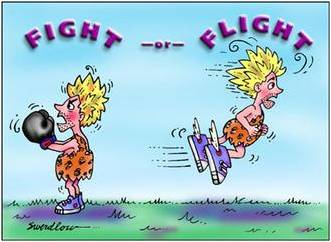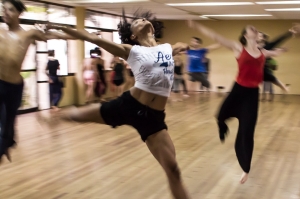I recently restarted my Krav Maga classes. Over the past few years, I have been in and out of Krav Maga many a times for various reasons, but have always been drawn back to it. After my class yesterday, despite the soreness and pain, I felt good and decided to pen down my thoughts about what I have felt and observed in the last couple of years. I see this practical self defense as a kind of somatic therapy which helps you get in touch with your healthy anger, and also allows you to step out of your freeze response, amongst many other things.
Getting in touch with your healthy anger
I help my clients cope with and heal their anxiety, trauma, pain and other emotional and physical issue on a daily basis. And what usually comes to the forefront is that most of us don’t really understand anger. Anger has been demonized for a long time. It’s only recently that people are discovering that anger is a very vital emotion and when not suppressed or disproportionately expressed, it can help us in many ways. And this is where Krav Maga comes in.
Karla Mclaren calls anger “the honourable sentry”. Healthy anger helps you take a stand for yourself without violating the boundary of others. It teaches you to respect your boundaries as well as that of others. “Anger arises to address challenges to your standpoint, your position, your interpersonal boundaries, or your self-image”. It helps “restore your sense of self and your interpersonal boundaries”
In a typical KM class when you are asked to practice with a sparring partner, by taking turns to be the defender and the attacker, you actually get a chance to get in touch with your healthy anger.
By defending yourself against the attacker, you get to protect your interpersonal boundaries and not let the attacker violate your boundaries. With specific set of natural reflexive techniques, you protect your personal space. When it’s your turn to be the attacker, your sparring partner defends himself/herself. This helps you develop a healthy respect for others’ interpersonal boundaries as well. So essentially you learn that you need to protect and restore your own boundaries and also make sure that you don’t transgress others’ boundaries.
The sparring sessions, power drills, aggression training etc allow your anger to flow freely through your body – while getting discharged in the specific reflexive action that is needed to protect yourself. The more you practice it in a safe simulated environment, the better you are able to channel your healthy anger to keep you safe when needed.
Freeze response
When there is any danger – real or imaginary – the body goes into the fight, flight or freeze mode. Freeze response is the feeling of being ‘scared stiff’.
Freeze response is also known as tonic immobility (Levine, 2010). This is the third reaction to threat called immobilization, or Tonic Immobility (TI). When you cannot escape threat, the freeze response or tonic immobility takes place wherein you do not feel the pain of the injury or in the case of the animals, the predator feels that the prey is dead. It is a coping mechanism to fool predators.
Now if we look at it in the Krav Maga realm, the defense postures help you complete the fight – flight response that the body automatically goes into when it is hyper aroused. You either run from the situation or you stay and fight. Either way you have tackled the threat successfully.  However, a freeze state can occur prior to the sympathetic hyperarousal, if you have concluded in that split second that you cannot overcome the threat. You go into the freeze state; the immobility stops you from running or fighting. Tonic immobility is a somatic dissociative response that protects against overwhelming threat that could result in death. If not discharged, this usually temporary response can also become persistent and chronic leading to trauma.
However, a freeze state can occur prior to the sympathetic hyperarousal, if you have concluded in that split second that you cannot overcome the threat. You go into the freeze state; the immobility stops you from running or fighting. Tonic immobility is a somatic dissociative response that protects against overwhelming threat that could result in death. If not discharged, this usually temporary response can also become persistent and chronic leading to trauma.
Animals shake off the freeze response by literally shaking their bodies. We as humans do not engage in this behavior and hence the freeze response gets stuck in our bodies. “The storage of those false responses or procedural memories is basically the structure of trauma.” (Dr. Scaer) [ Adding a clarification here: Humans ‘can’ shake off the trauma if they want to. For more information on shaking off freeze response, go to http://traumaprevention.com/ ]
When you keep practicing these techniques in mock scenarios, your body will gradually learn to come out of this paralyzing state of freeze, and you will be responding with fight or flight depending on what is needed in that situation. This will also help in responding to emotional threats without becoming numb or dissociating. If you’ve had trauma in the past, and have frozen in threatening situations, then those locked traumas will also get released in the form of minor tremors or shaking of the body. Certain stretching techniques that we do in the classes- when done for a longer period of time – can automatically result in shaking and trembling, which is simply the body releasing the stored autonomic and physical somatic energy.
Conclusion: Krav Maga lets you find the ‘gifts of anger’ and helps you come out of the frozen paralyzing response to emotional or physical threat.
Observe how you feel after the classes. Do you think they are helping you get in touch with your healthy anger or come out of the freeze state? Leave your comments below.
References
Karla Mclaren http://karlamclaren.com/understanding-and-befriending-anger/
Peter Levine, http://www.amazon.in/Unspoken-Voice-Releases-Restores-Goodness/dp/1556439431
Dr Scaer http://www.traumasoma.com/










 However, a freeze state can occur prior to the sympathetic hyperarousal, if you have concluded in that split second that you cannot overcome the threat. You go into the freeze state; the immobility stops you from running or fighting. Tonic immobility is a somatic dissociative response that protects against overwhelming threat that could result in death. If not discharged, this usually temporary response can also become persistent and chronic leading to trauma.
However, a freeze state can occur prior to the sympathetic hyperarousal, if you have concluded in that split second that you cannot overcome the threat. You go into the freeze state; the immobility stops you from running or fighting. Tonic immobility is a somatic dissociative response that protects against overwhelming threat that could result in death. If not discharged, this usually temporary response can also become persistent and chronic leading to trauma.